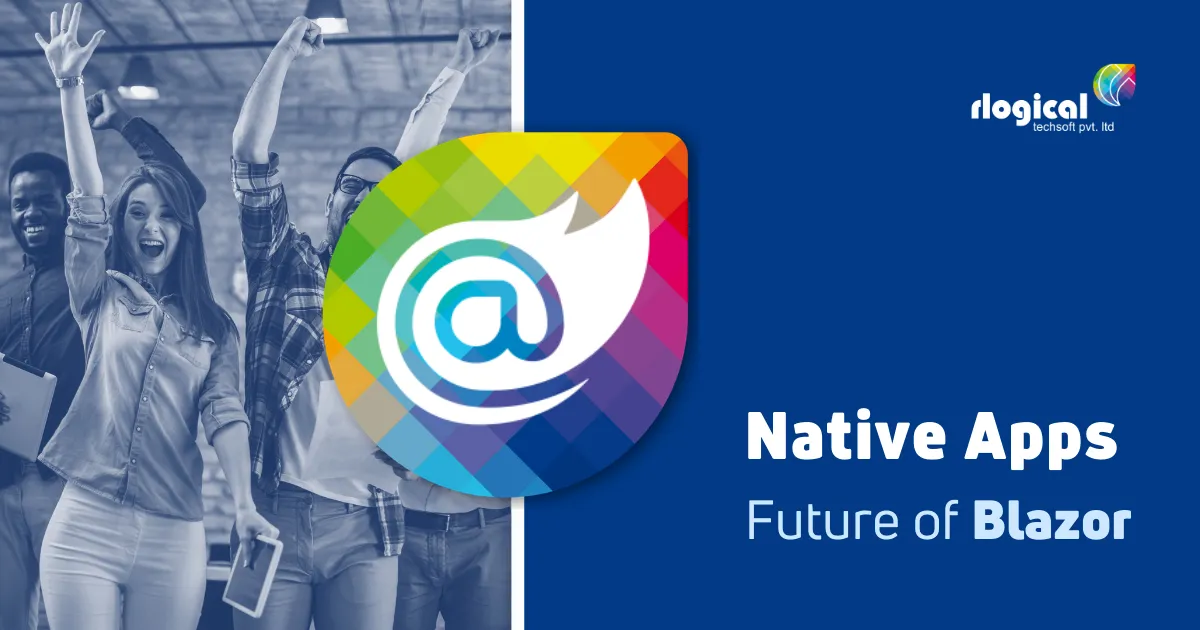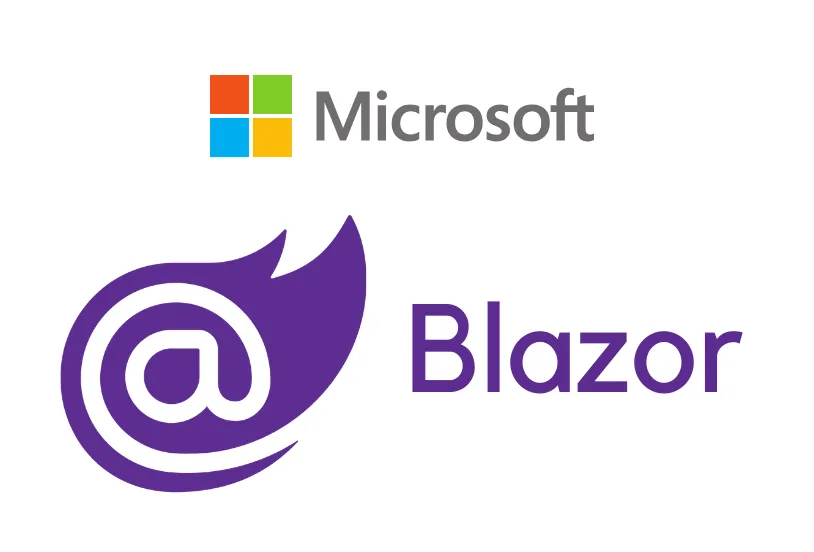
Blazor app happens to be new. It is so new that it is just a beta preview in the most recent .NET Core version. The initial release of Blazor has been scheduled for May this year.
However, despite this innovativeness, Microsoft is planning Blazor’s future already. Microsoft, in their latest .NET Conf event, has revealed plans which might bring Blazor to native applications. For a platform that is already taking over the whole JavaScript world, this is an optimistic plot twist. However, it could just work for devoted developers of .NET.
The Universal UI Quest
.NET developers are vying for a way of creating a cross-platform user interface for ages. This implies being able to create a single front end in a dream fantasy environment that fits with web, desktop as well as smartphone applications.
The most advanced desktop development toolkit of Microsoft and its solution for Native mobile app development are similar in design. The user interface is specified employing the XAML markup standard. Both rely on linking data and supporting the MVVM pattern. However, there are issues, despite these similarities. WPF has closely related to DirectX as well as the Windows operating system’s other core components. And even though WPF and Xamarin merged, the XAML-based user interface and the HTML markup on the site are unacceptable.
There have been attempts to fix the issues, but the official aspect of the platform funded by Microsoft is nothing. Google’s got its toolkit named Flutter. However, Microsoft has a difference between smartphones, laptops, and online environments.
A Blazor Background
Here’s a fast recap in case you’re not up to Blazor app yet: Blazor happens to be the name for a couple of different technologies that allow you to build browser-based apps running .NET code.
The initial – and a little advanced – is Blazor Server technology, which acts like an old-fashioned console. The browser is in continuous touch with the web server, which is running the .NET code.
The server just returns updated HTML bits, so that after every single event the browser is going to refresh the page. Blazor WebAssembly is the second software that smuggles a small .NET runtime into the application and that is used to run code # rather than JavaScript. This happens to be the Blazor app which has generated all the enthusiasm.
Suppose Blazor WebAssembly gets its full release and is doing everything it says on the tin — i.e., offering .NET developers a technique of running C# in their browsers. This is pretty impressive. Where should Blazor go next, however? Microsoft continues to indicate that many of its experimental ventures are no longer just trials. The first instance happens to be Blazor desktop apps.
Must Read: 9 Reasons to Choose .Net Core for Your Upcoming Project
Blazor On the Desktop
JavaScript-powered web apps are one of the biggest developments of the last few years. Normally, they operate with Electron.

The magic of Electron is managing two core components of infrastructure in the same position. For the front-end code, it operates Chromium, the JavaScript engine of Google, and for the back-end code, it operates Node.js, the Web server which is JavaScript-based. It breaks down from the browser sandbox to enter the file system and local hardware. However, this design also has an expense. Electron is going to add overhead and will chew ravenously by using memory. Even the application which is quite simple turns out to be a download of 50 MB+. And the launch of a blank program requires 100 MB+ RAM instantly.
A project that brings Blazor into Electron is being built by Microsoft. However, it’s trying various ways to trim down stuff instead of utilizing the entire Electron kit. WebWindow, a versatile website framework that uses the embedded web support in desktop operating systems, is one solution. This is how the application works:
- WebWindow runs a native desktop application (on any OS)
- A web page is attached to the entire window
- The web page boots the Blazor program for desktop usage
But the secret is right here. The web window is coupled to the Blazor support that enables it to call the .NET runtime instead of downloading the .NET runtime from the WebAssembly tab. In this way, WebAssembly, JavaScript, and Node.js layers in Electron are avoided. Output increases and the overhead memory decreases considerably.
Other gimmicks are also present. The download size of the program is just a fraction of a complete Electron application. And your Mac version of the software can be quickly translated into a conventional, installable software kit with the right icon.
To date, these tests all had serious disclaimers. However, they figured in the .NET conf conferences as official options on a distant horizon in the Blazor Future Features overview. Yes, for production growth today, they are not realistic. Yet they now appear to be less as concepts and more as schedules.
Native Blazor on Mobile
For mobile app development for the web, Blazor is an alternative option. However, what about applications that require improved performance or native features such as hardware access?
With Xamarin, the .NET platform already provides a great alternative. Xamarin is now a unique toolkit, but it is absorbed into the standard library by .NET 5.
However, Xamarin is not ideal for Microsoft’s modern environment. Xamarin apps don’t look like Blazor apps from a programming model perspective. This is a challenge for an organization that wants to build a single model of development that can handle anything.
Mobile Blazor Bindings is a potential alternative; an experimental project revealed by Microsoft first in the .NET Conf. Mobile Blazor Bindings’ purpose is quite simple: to enable developers to create an application with the Blazor page model and access Xamarin features.
The development teams build something that feels like a Blazor application using Mobile Blazor Bindings but also uses support from Xamarin for native UI functionality and application-specific features. You will not be able to construct a single user interface for mobile gadgets and web apps. However, the breach is so small that a developer who has built a Blazor Web Assembly framework would instantly feel at home developing a native app using the Mobile Blazor Bindings program.
Also Read: Native App Vs Progressive Web Apps: Who is winning for your business?
What’s Next
The general conclusion is evident: with Blazor, Microsoft is deepening its ambitions and sees it as a long-term competitor to ventures such as Flutter as well as React Native. In only two years, Blazor has gone a realistic way of running C # and .NET in the browser from a fascinating prototype. It isn’t only an effort to displace JavaScript, the widest-range programming language we’ve ever seen, but also a potential way for closer collaboration between web production and native development.
Why Rlogical Techsoft is best for Native Mobile App Development Company?
Rlogical Techsoft is the best company when it comes to mobile app development since they have got lots of experience and expertise. Their team will be working with every single step for developing mobile app solutions that will satisfy their customers flawlessly. GET IN TOUCH
Jatin Panchal
Jatin Panchal is the Founder & Managing Director at Rlogical Techsoft Pvt. Ltd. For more than a decade, he has been fostering the organization's growth in the IT horizons. He has always bestowed personalized approaches on .NET, PHP, Flutter, and Full-Stack web development projects. From startups to large enterprises, he has empowered them to accomplish business goals. By delivering successful industry-driven solutions, he is encouraging the capability of AI, ML, blockchain, and IoT into custom websites and hybrid mobile applications.
Related Blog
- Best PHP Frameworks For Your Web Development Project: PHP Tools Highlight in 2025
- How Much Does eCommerce Startup Cost - Guide to Calculate and Plan Budget
- How to Integrate AI and ML With .NET Applications to Skyrocket in Marketplace?
- Java or Dot Net: Which is Better for Web App Development?
- Why is the ASP.NET platform so popular for customized web apps?
Categories
- All
- AI Development Services
- Amazon Web Services (AWS)
- ASP.Net Development
- Azure Web App
- Big Data Analytic
- Customize
- Digital Marketing
- Drupal Development
- E-commerce web development
- Education Mobile App Development
- Enterprise Application
- Event Management App Development
- Fintech
- Fitness App Development
- Food Delievery
- Front-End Development
- Grocery App Development
- Healthcare App Development
- Hire Dedicated Developers
- Hotel Booking App
- IT Industry
- JavaScript Development
- Mobile App Development
- On Demand App Development
- On Demand Healthcare App Development
- PHP Development
- POS Software Development
- Real Estate Mobile App Development
- Retail Business App Development
- Salesforce
- Social Media Development
- Software Development
- Technology
- Transportation App Development
- UI/UX Design
- Web Design
- Web Development
- Web Services
- Web/Data Scraping Services
- WordPress




 Jatin Panchal in ASP.Net Development
Jatin Panchal in ASP.Net Development 





